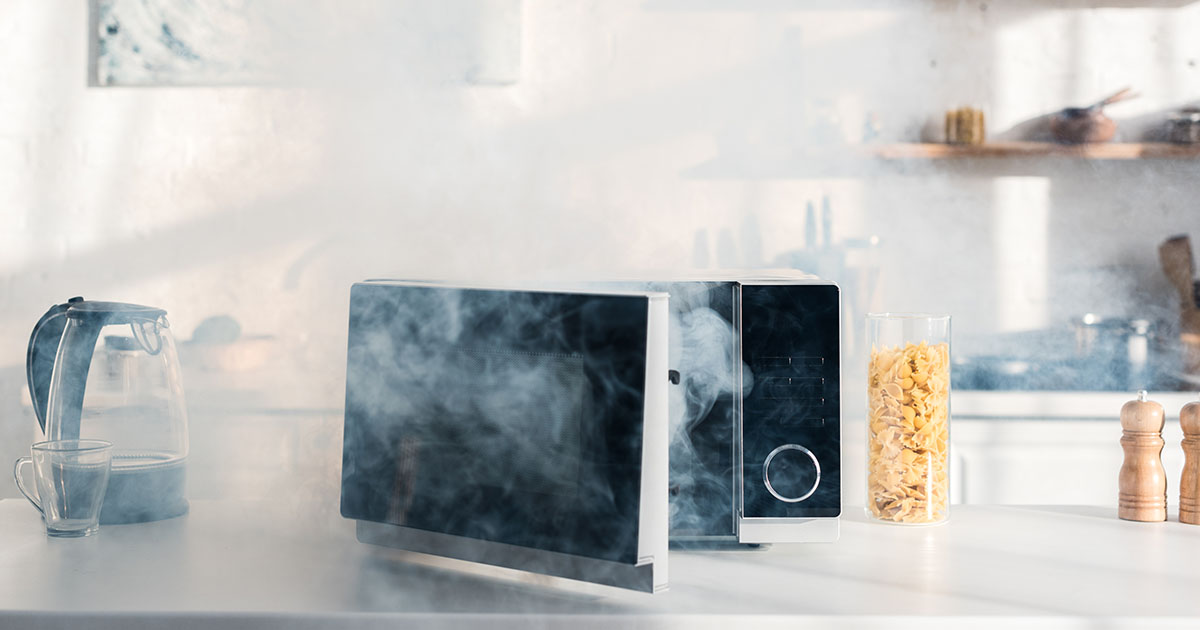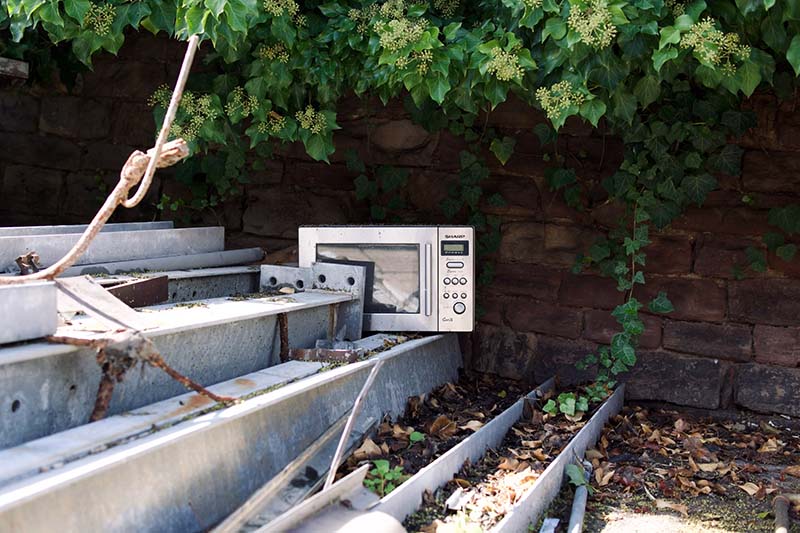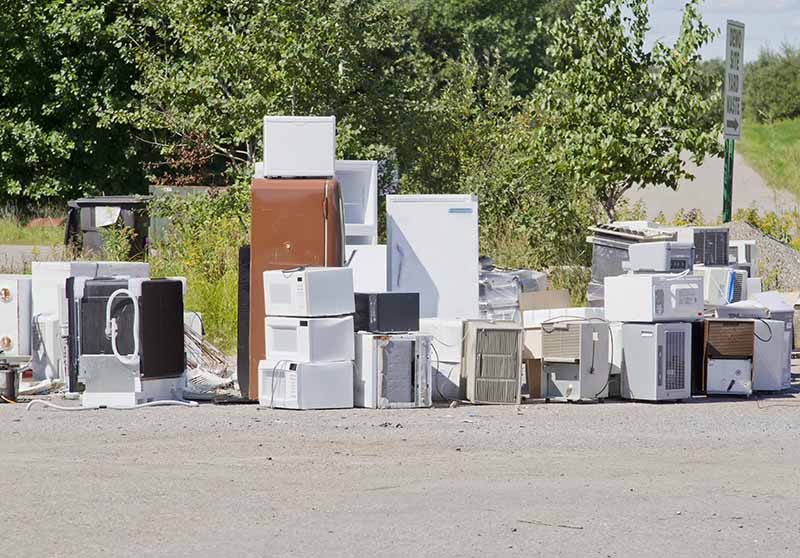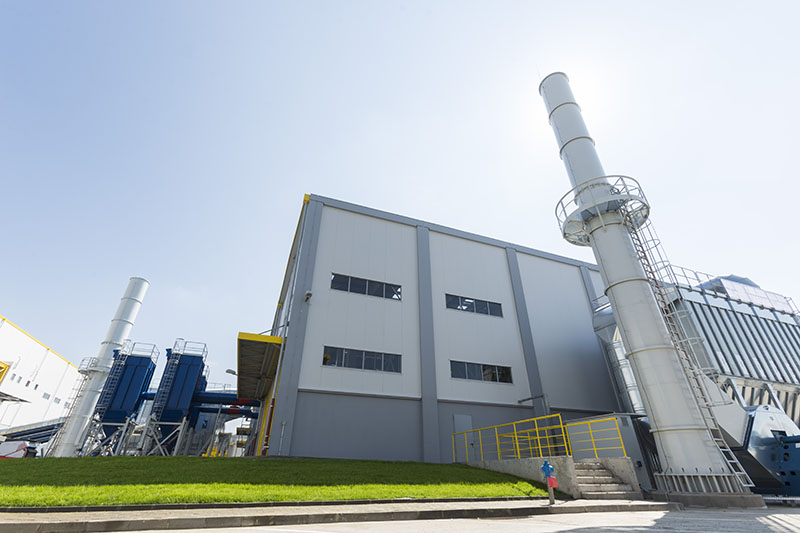How to Dispose of a Microwave

Most people know, on some level, that electrical goods can’t just go into the bin. That’s why we all keep boxes of used batteries in our cupboards and drawers full of cables that we might need again. (If it helps, old batteries can usually be taken to your local supermarket).
When it comes to a broken microwave, however, it’s much too large to hoard and once you have decided it’s to be replaced it’s normally a good reason such as being a hazard to use with disturbing noises or rust. You’ll want to get it out of your (often) limited kitchen space as quickly as possible - so how do you do that?
From microwave recycling centres near you to skips, tips and Man & Van trips, we’ll cover the best ways to dispose of a broken microwave in the UK.
Can You Put a Microwave in the Bin?
Nope! As we mentioned above, electrical items should never be put into your daily household bin - or any of your other bins, for that matter! Components are liable to leak chemicals into the surrounding area, contaminating the water and soil around them and making them more dangerous for waste workers to remove.
Can You Take a Microwave to the Tip?
Yes, you should be able to take your old microwave to the tip, provided you have enough tip journeys left in the year if your council has site visit limits. If it’s just one microwave you’re disposing of, it may not be worth using one of your rationed visits to get rid of it.
How Much Does It Cost to Dispose of a Broken Microwave?
The cost of microwave disposal depends on the option you choose. From a drive to the tip to hiring a man & van to remove it for you, the amount you’ll pay could be different every time. If your microwave is still working, you may even get some money back by selling it on - so don’t dismiss all the options if you are on a budget.
What to Do with an Old Microwave

There are plenty of options for your microwave, whether it’s broken or just a bit old. The most eco-friendly option is to make sure it’s reused, whether it’s the microwave itself if in good working condition or to be recycled for its component parts.
Reuse it
If your microwave is in safe working condition, you may not need to throw it away yet. Check for weathering and rust around the seals which could make it unsafe to use: if it looks to be in good condition, you may be able to pass it on to a friend or to charity.
Ask your local charity shop if they’re willing to accept a used microwave. Some may not, but it’s always worth checking. Failing a charity shop, your local area may have a Facebook group where you can pass it on.
Sell it On
An old microwave in good, clean condition may still fetch a bit of money on sites like Preloved, eBay or Facebook Marketplace. To keep other people safe, make sure that your appliance is in working order and doesn’t have frayed wires, clogged vents or rusted seals before you list it. PAT testing doesn’t hurt, either!
Take it to the Tip
Household recycling centres are equipped with special bins for electrical components and wires. If you have a car and the fuel, you can always cart your old microwave straight to the dump - just make sure you have enough tip trips left in the year!
Old Microwave Collection
If you don’t have the time or enough waste to justify going to the tip, it may be time to book a collection. A Man & Van service can get rid of your old microwave as well as other tricky waste like fridges and broken laptops.
Always check whether your collection company prioritises recycling before you book, since the most eco-friendly option for a microwave that can no longer be used is to recycle its components.
How to Recycle an Old Microwave

Like all electronics, microwaves are made of a collection of elements and components that can be difficult to procure and create. Luckily, these components can be retrieved from old microwaves and used to create new electronics, reducing the environmental impact of mining for fresh resources.
Step 1: Your Microwave is Collected
Whether you use a waste management company or your local recycling centre, your microwave has to change hands before anything can be done about it. In most cases your involvement ends here - unless you work at a recycling centre!
Step 2: It’s Taken to a Hammer Mill
In order to be reborn anew, your appliance needs to be broken down first. When recycled it will be most likely transported to a hammer mill, where machines will reduce your microwave into small pieces that can be sorted.
Step 3: Magnetic Items are Separated
The pieces will then be loaded onto a conveyor belt, where components containing iron (ferrous material) will be separated from the rest with magnets. Magnetic components are important in microwaves due to the magnetron, which combines electrons with a magnetic field to create microwave radiation. In cases where non-ferrous items like plastic are combined with iron, the pieces will be manually picked out of the mix.
Step 4: The Components are Cleaned
The parts will then be gently cleaned with a vacuum, removing dirt, rust and other contaminants from the separated pieces. Dangerous items like batteries will have already been removed to be recycled separately, as the acid needs to be neutralised before being recycled.
Step 5: Materials are Sent to Specialists
Once they’ve been cleaned, separated, and removed, the materials will be sent along to third-party centres to be processed into usable components again. Plastics, iron, and other high value metals all have highly specialised refinement processes that require specialised plants to complete the process.
What are the Benefits of Microwave Recycling?

There are plenty of benefits to recycling your old microwave, and they aren’t limited to the environment, either! It’s always better to recycle, whether you’re concerned about being eco-friendly, reducing the space taken up by landfill or making new appliances easier to get your hands on.
Eco-Friendliness: It goes without saying that recycling is much better for the environment than dumping electronics incorrectly in a landfill or letting them go to rust outside in a garden, or even worse fly tipping them.
The more elements that are recycled back into new products, the fewer metals need to be mined with heavy machinery, a process that escalates our carbon footprint and damages ecosystems.
Job Creation: Recycling can be done anywhere materials need to be processed, while mining elements is restricted to areas where metals have been found often far below ground. That means that recycling efforts can adapt to areas and boost local economies.
Economical Benefits: Without the additional costs of sourcing materials straight from the earth, it can be cheaper to produce new appliances from recycled materials. That’s a benefit that you’ll hopefully see when you’re buying a new microwave or other products that reuse old microwave materials!
If you’d like to find out more about recycling appliances, electronics and white goods, check out our blog for guides about a wide range of tricky waste that can’t be thrown in the bin. Or get a free quote today to arrange for our Man and Van service to arrange a collection of your old white goods appliances.

